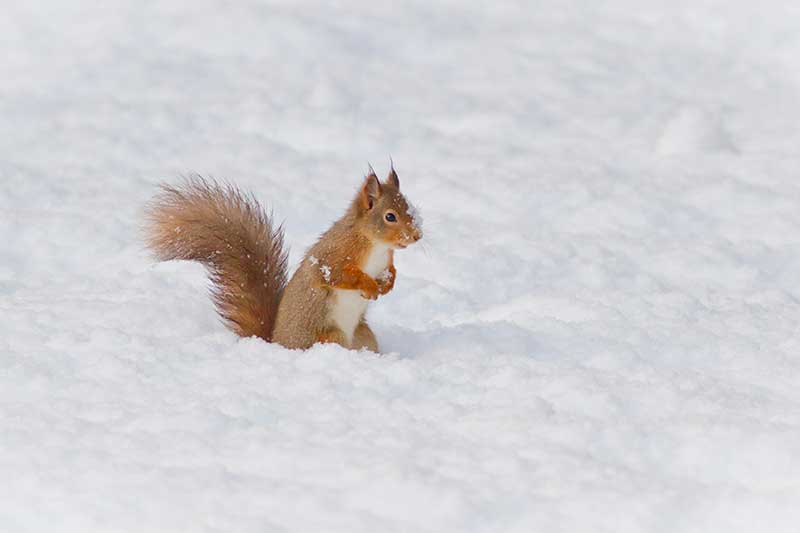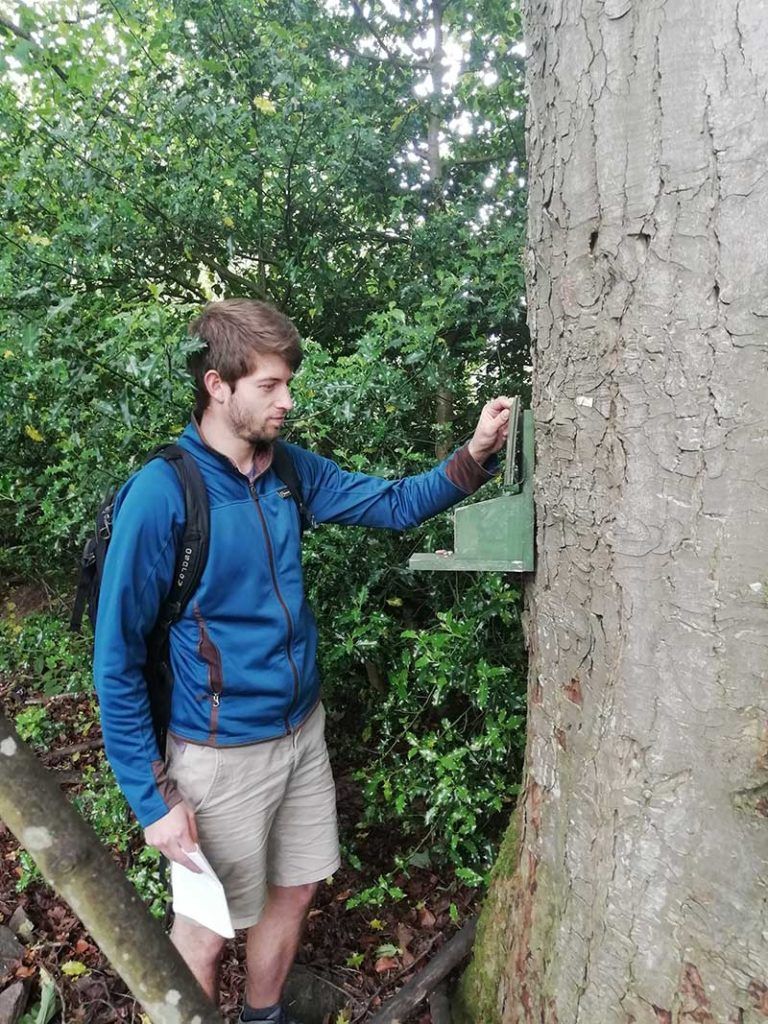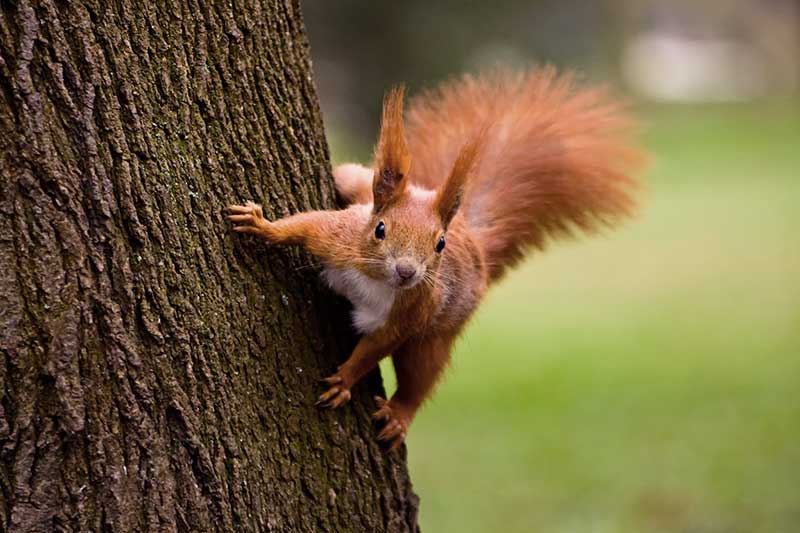Saving endangered red squirrels in Scotland

Status
Endangered
Population
287,000
Scientific name
Sciurus vulgaris
The problem
Despite the fact that Scotland’s red squirrel numbers have dropped hugely in recent decades, it is still home to 75% of our UK population. This makes it extremely important that we ensure Scotland’s endangered red squirrels have a secure future.
The main threats they face are from the invasive greys. They outcompete reds and infect them with the deadly squirrelpox virus.
Saving Scotland’s Red Squirrels is an initiative that PTES has been supporting for several years. A coalition of organisations aims to ensure a future for endangered red squirrels in Scotland by strategically controlling grey squirrel populations in key areas.
Other aims involve managing the squirrelpox virus to prevent it spreading and monitoring red and grey squirrels across Scotland.

George Porton inspecting a squirrel box
Volunteers carry out a large part of the monitoring effort in spring each year. Squirrel feeder boxes are put in the same locations every spring. Sticky tape is placed inside the lid to collect hair samples, which tells us which squirrel species is present in an area. The data collected therefore has the potential to evaluate the progress of the project, showing changes in the distribution of both red and grey squirrels.
The problem, however, is that squirrels are not always detected using this survey method. It may appear that sites are unoccupied but squirrels are actually present. The probability of detecting squirrels can also change every year with factors such as weather. Analysis needs to account for these variables so that trends in the actual squirrel populations to be identified.
The solution

Data collected from the feeder boxes will be analysed using state of the art methodology, known as occupancy modelling. This allows for estimations of changes in the population of both species of squirrels, taking into account the changing probability of detecting squirrels in the spring surveys.
PTES is supporting maths-whiz George Porton to take a close look at the data. George, who studied water voles for his undergraduate degree, is now turning his talents to help red squirrels. The analysis George conducts during this internship will provide evidence needed to successfully evaluate Saving Scotland’s Red Squirrels’ management work. It is very important to evaluate conservation management using evidence so that it can be successfully adapted to ensure objectives are met. George will report back shortly to let us know how he is getting on.
This project is only possible thanks to our generous donors. Can you help by donating today?
